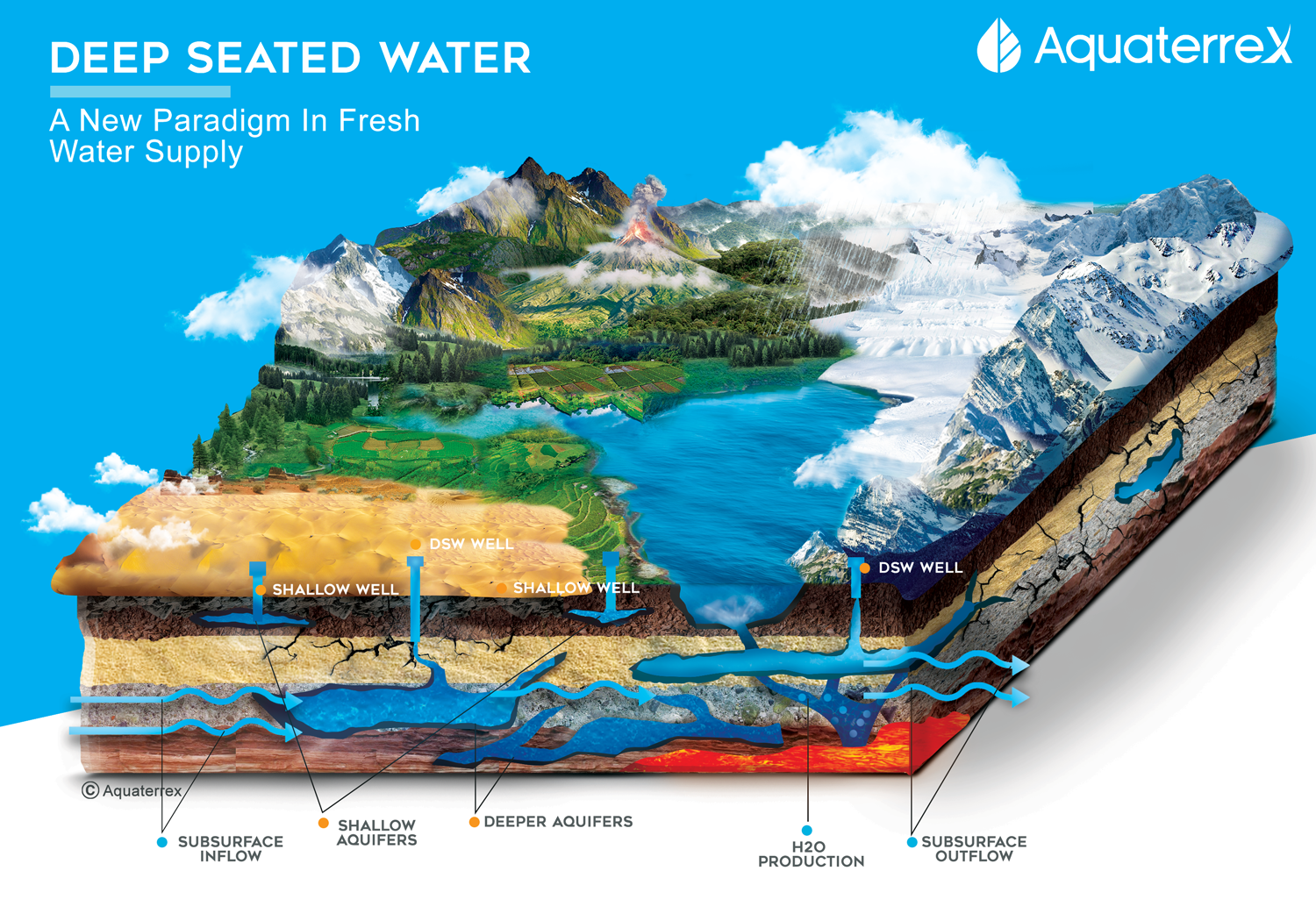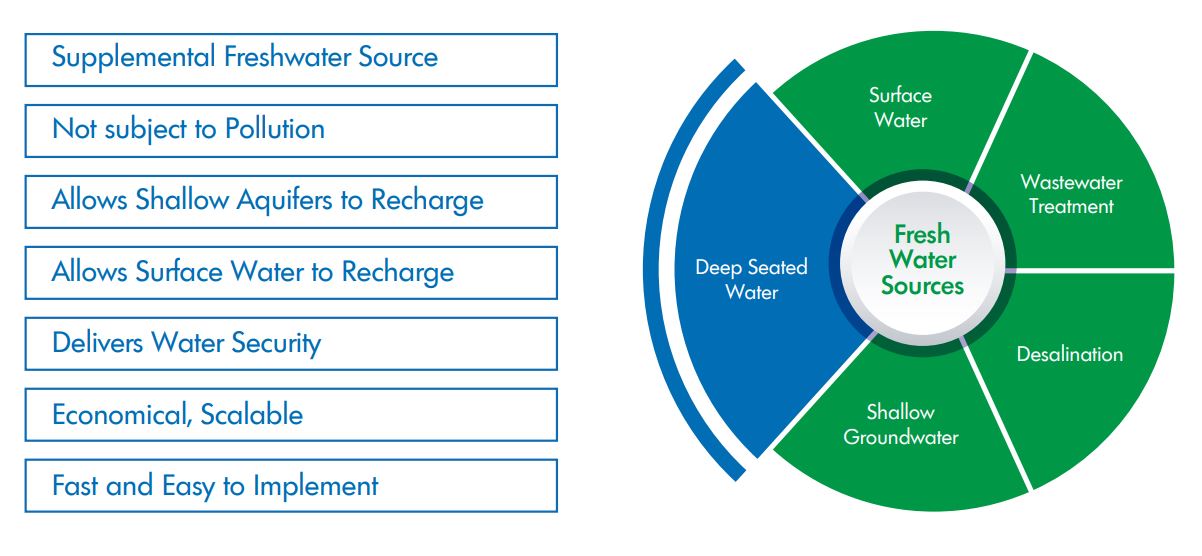
Hidden Ocean Beneath Earth’s Crust Goes Mainstream
Scientific Evidence Gains Respect
For years, the accepted scientific viewpoint was the idea that nearly all water on Earth came from outer space. Great comets repeatedly struck Earth billions of years ago and that created our oceans and provided virtually all the water on Earth. That was the story. And for us in today’s world, it means that we have no more water available except what is already produced.
Now, however, scientific evidence gained over the past 20 years has convinced a growing portion of the scientific community that Earth actually generated, and continues to generate water, which helps explain why 71% of the Earth’s surface is covered in water. Headlines from numerous publications tell the story, “Hidden ‘Ocean’ Beneath Earth’s Crust Holds More Water Than All Surface Seas Combined” and “Massive ocean discovered beneath the Earth’s crust containing more water than on the surface.” These stories have been featured on the Home pages of Google, Bing, and Yahoo. Of course, we at AquaterreX have written about this for some time. If you want to know more, check out our blog Earth’s Water – Fallen from outer space or degassing from inside the planet?
The recent articles focus on a scientific paper published in 2014 by Northwestern University. It reveals that the “Earth has an underground reservoir of water locked up in a rock called ‘ringwoodite’ which acts as a sponge for water, attracting hydrogen and trapping water within its molecular makeup.” It can hold up to 1.5% water, which if it contains just 1% water it would hold three times more water than all the oceans of Earth combined.
Later, in 2017 Balz Kamber, Chair of Geology and Mineralogy at Trinity College in Dublin, Ireland stated:
“…evidence suggests that the Earth’s surface water or ‘liquid hydrosphere’ actually accumulated by degassing from within the planet. Water is stored in the Earth’s mantle in the form of hydroxyl groups (one hydrogen and one oxygen atom) trapped within minerals such as ringwoodite.
When the mantle rocks melt, the water dissolves into the magma. As the magma rises towards the surface and cools, pressure is reduced, crystals form and the water is released and emitted as vapour through volcanoes. With this mechanism, water from great depth can be degassed to the surface.”
So, water is continuously produced deep in the Earth. Evidence of this is that 90 to 97% of volcanic gases are water. This includes volcanoes, volcanic vents, fumaroles, and hydrothermal systems found all over the planet and in the oceans.
The Challenge of Water Availability
So, contrary to popular belief, there is an abundance of fresh water on Earth. With the aid of new technologies and best management practices, it is possible to meet the planet’s water needs sustainably.
The US National Groundwater Association estimates there are 6,000 years of freshwater supply in the upper two kilometers of the earth’s crust Nature Geoscience article. AquaterreX has developed the ability to locate and economically bring to the surface these previously untapped water resources.
Deep Seated Water: An Alternative and Clean Source
Deep Seated Water (DSW), is groundwater, typically sourced from deep aquifers that are located lower than shallow aquifers. Such deep aquifers are supplied not only from local catchment basins but also by subsurface inflows across basin boundaries. Deep Seated Water also encompasses water created at the mantle level of the Earth under extreme heat and pressure. Contamination does not occur in these deep water aquifers as modern pollution has not reached these deeper levels. And the best news is that this water is accessible and plentiful.
The Missing Piece: Deep Seated Water
Deep Seated Water is the Missing Piece that can solve the water crisis puzzle – contamination, drought, scarcity. Many water strategies focus on conservation, rather than additional supply. Other solutions such as desalination and wastewater treatment are potential answers for some, but they also come with trade-offs such as high cost, high energy usage, long planning periods, and toxic waste. Deep Seated Water is located almost everywhere on the planet, and it can be added to the mix of solutions as a supplemental freshwater source that is not subject to contamination, is fast and easy to implement, and is economical and scalable. And, tapping Deep Seated Water allows both surface water and shallow aquifer sources to recharge, making the total system more environmentally sustainable.
Enter Science and Innovation in the 21st Century
Finding groundwater can now be a precise scientific operation rather than a gamble. Using a combination of geologic, hydrologic data sets, plus satellite imagery and underground survey instrumentation, a company like AquaterreX can pinpoint groundwater, including depth, flow rate, and whether the water is fresh or saline. 3D models can be created and precise readings can pinpoint a location for a well with near-100% accuracy.
About AquaterreX
AquaterreX (www.AquaterreX.com) is a global environmental services organization with a mission to broadly implement effective water and food security solutions. The name AquaterreX comes from the Latin, aqua (water) and French, terre (earth, land) which is a derivative of the Latin, terra, and “X” for exploration. Thus, AquaterreX encompasses water and land solutions for the planet.
Some additional articles:
Massive ocean discovered beneath the Earth’s crust containing more water than on the surface
Hidden ‘Ocean’ Beneath Earth’s Crust Holds More Water Than All Surface Seas Combined

